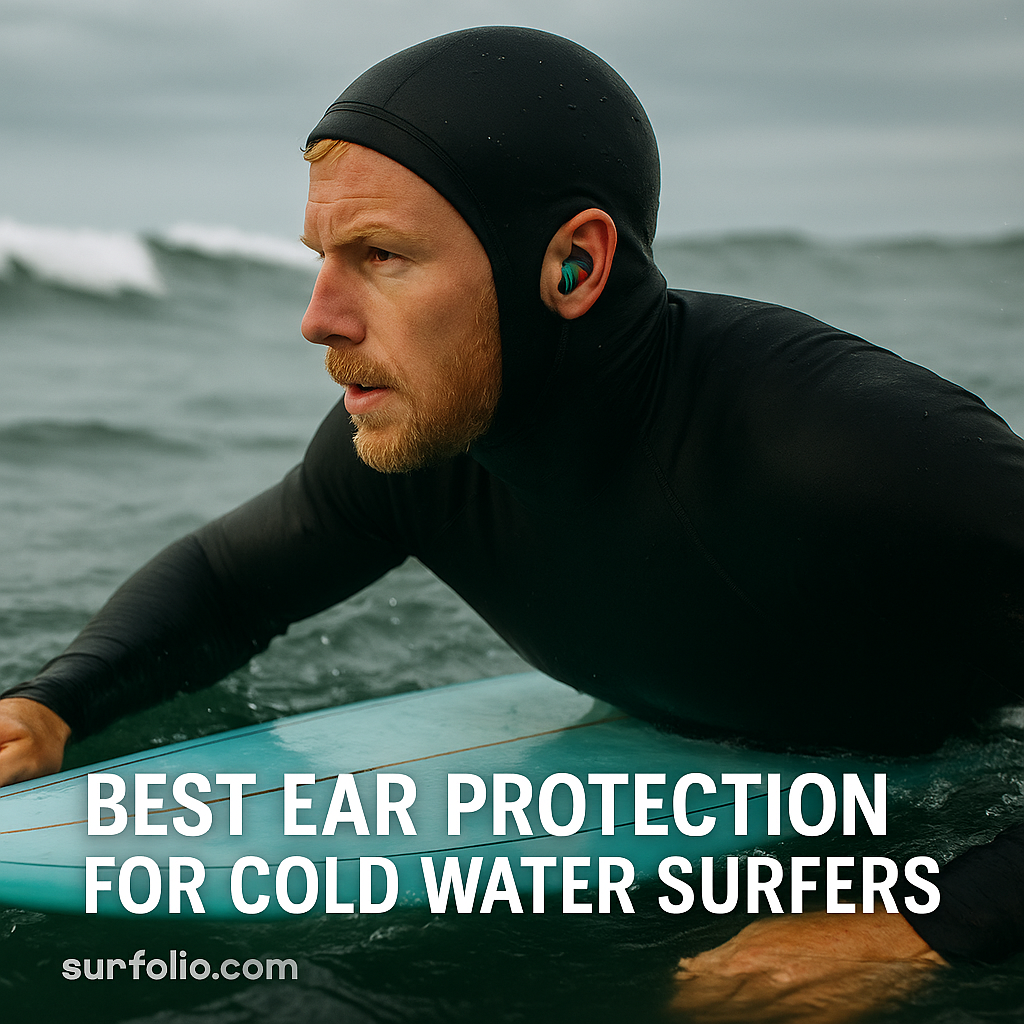
Cold water surfers know that the thrill of winter swells comes with a price: icy winds, freezing duck dives, and the silent threat of surfer’s ear. While the chill fades after a few waves, the damage can last a lifetime if you don’t protect your ears properly. Fortunately, modern ear protection gear can keep you comfortable and safe without sacrificing performance.
What Is Surfer’s Ear?
Surfer’s ear, or exostosis, is a condition where bone grows inside the ear canal due to repeated exposure to cold wind and water. Over time, these growths can narrow the canal, trapping water and wax—leading to infections, hearing loss, and, in severe cases, surgery.
It’s one of the most common issues among cold-water surfers, but also one of the most preventable.
Why You Need Ear Protection
Even mild exposure over years can trigger bone growth. Ear protection doesn’t just prevent surfer’s ear—it also keeps cold water out, helps with balance, and prevents infections from trapped moisture. The key is finding ear protection that fits well, stays secure, and doesn’t interfere with your hearing or balance.
Types of Ear Protection for Surfers
1. Surf Earplugs
Surf earplugs are the go-to for most surfers. Designed to block cold water and wind while allowing sound to pass through, they’re lightweight and easy to wear for long sessions.
Top Picks:
- SurfEars 3.0: One of the best on the market. Customizable fit, minimal hearing loss, and comfortable for all-day wear.
- Docs ProPlugs: Classic option with vented design. Great for preventing water entry without blocking sound.
- EQ Seals Balance Pro: Soft silicone design with breathable membrane for balance and clarity.
Pros:
- Comfortable and effective
- Allow natural hearing and balance
- Reusable and long-lasting
Cons:
- Easy to lose if not attached to leash
- May take time to find the perfect fit
2. Neoprene Surf Hoods
A surf hood offers full coverage and extra warmth while reducing cold air and water exposure to your ears. Paired with plugs, they provide the ultimate cold-water defense.
Best Use: In extremely cold or windy conditions (below 60°F / 15°C).
Pros:
- Adds warmth and protection
- Shields ears and head from wind chill
- Reduces chance of ear infections
Cons:
- Can feel restrictive
- Slightly mutes sound
Recommended Models:
- Patagonia R3 Yulex Hood: Eco-friendly and flexible, with a snug seal.
- Xcel Infiniti Hood: Great thermal protection and secure fit.
3. Custom Molded Earplugs
For those surfing regularly in cold water, custom earplugs offer the best fit and comfort. Audiologists can mold them perfectly to your ears for full sealing and durability.
Pros:
- Maximum comfort and effectiveness
- Long-lasting and personalized fit
Cons:
- More expensive (typically $100–$200)
- Slightly less breathability
Maintenance Tips
- Rinse your earplugs and hood with fresh water after every session.
- Dry completely before storing to prevent mold or bacteria growth.
- Check fit regularly—your ears change over time.
- Store in a ventilated case to keep gear fresh and clean.
Bonus: Natural Prevention Habits
Even with gear, you can further reduce risk by:
- Avoiding surfing in polluted water or after heavy rains.
- Keeping your ears dry between sessions.
- Using ear drops with vinegar and alcohol to remove trapped water (only if your ears are healthy and uninjured).
Final Thoughts
Surfing in cold water doesn’t have to come at the cost of your hearing. Investing in the right ear protection keeps you in the lineup longer and saves you from painful surgeries later.
Just like wax or leashes, ear protection should be standard gear for every cold-water surfer. Because the best sound in surfing isn’t the wind in your ears—it’s the rush of the next perfect wave.
